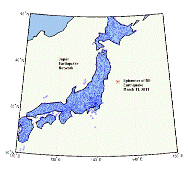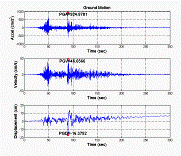

|
Personal Website |
|
Mostafa Tazarv MSc, Sharif University of Technology PhD Student, Carleton University |
|
Carleton University |
|
In this page, you can find my report about recent destructive earthquake in Japan on March 11, 2011. The goal of this report is to find out whether recorded ground motions in 2011 Japan earthquake (M9.0) are near-fault ground motions or not using Baker’s quantitative method. |
|
Abstract Some ground motions recorded in the direction of fault rupture show large long-period pulses in their velocity time history. There are several studies which have proposed different possible configurations of those pulses. However, to quantitatively classify a new record as a near-field (or near-fault) ground motion, there is only one method proposed by Baker (2007). Before this study, such a classification had been done by visual observation of records. In this report, Baker’s method will be reviewed. This method will be used to find out whether recent destructive earthquake in Japan (M9.0) on March 11, 2011 is a near-fault ground motion or not. |

|
· Quantitative Identification of Near-Fault Ground Motion using Baker’s Method; an Application for March 2011 Japan M9.0 Earthquake (April , 2011) |
|
Download: |

|
(C) Mostafa Tazarv, April 2011 |
|
Acknowledgement:
I like to thank my instructor in the course of “Engineering Seismology”, Prof. Dariush Motazedian (Link) at Carleton University, for kindly sharing his valuable experiences with me. Also, I am grateful to Mr. Asghar Amiri, my friend and MSc classmate at SUT and current PhD student at University of Southern California (LA) for sharing his MSc thesis called “Inelastic Response of Soil-Structure Systems Subjected to Near-Fault Ground Motions”. |
|
Home |